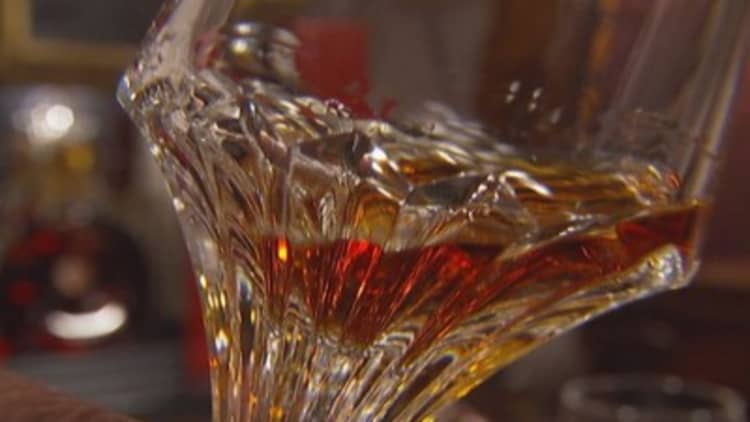
At 33-years-old, Baptiste Loiseau won't live to see the culmination of his life's work.
No tears, please. That's perfectly ordinary for his role as the new cellar master at the House of Rémy Martin, overseeing the 100-year process of its premium Grande Champagne cognac, Louis XIII. The cognac—which has a retail price of $2,850 per bottle and whose even more premium releases, such as Rare Cask 42,6, have fetched $22,000—is a blend of 1,200 eaux-de-vie, or fruit brandy, distilled over three generations of cellar masters.
The changing of the guard is a rare one. "If you're looking for job security … if you can get the job [of cellar master], you're going to keep it," said Frank Coleman, a senior vice president for the Distilled Spirits Council of the United States.
Rémy Martin has had just five cellar masters in its 290-year history, with the first appointed in 1924. And it has a track record of breaking tradition with its picks. Its fourth cellar master, Pierrette Trichet—the first female cellar master in France's Cognac region—retired in April at age 62, after 11 years in the position and 38 with the house.
Read MoreSix over-the-top cocktail splurges
Loiseau, her successor, is the youngest to take the title. Before being appointed as Trichet's deputy in 2012, he studied the impact of aging conditions on the quality of the eaux-de-vie, experimenting with ways to improve its quality. "It's the first part of the job to be a scientist," he said.
Trichet, with Loiseau translating, called her appointment in 2003 "a sign of audacity." And the appointment of a cellar master so young as Loiseau? "Also a sign of audacity," he said.
Read MoreYou, too, can drink George Washington's brandy
Cellar masters are tasked with overseeing the process of making cognac, from grapes to glass. Each year, they direct the distillation of the eaux-de-vie, a colorless fruit brandy usually made from ugni blanc grapes, which is then aged in French oak barrels for at least two years and maybe as many as 40. Many of those eaux-de-vie will be used in the house's more widely available cognacs.
Eaux-de-vie may be moved to different casks over the years and blended together, eventually transferred into glass demijohns to halt the aging process, said Jerald O'Kennard, director of the Beverage Testing Institute. (In that way, one year's harvest may eventually account for dozens of eaux-de-vie.) The cognac may linger in those vessels for decades more. "Those old stocks give character to the younger stocks, when blended in," he said.
A cellar master's challenge is to uphold the style of the house, said Trichet. That means there's no need to anticipate the tastes of an audience decades in the future. But it also requires skill: Today's Louis XIII must offer a similar drinking experience to the one available a century ago, and what will be on offer in another 100 years. "Perhaps the hardest thing, you have to recreate every year the same blend and characteristic style," she said.
Read MoreWhat makes weddings expensive—for guests
Tasting older blends can provide a blueprint for cellar masters to reverse engineer, figuring out where they want to go, O'Kennard said. It also helps them track that rare older blend worthy of its own release, without adding other eaux-de-vie. During her tenure, Trichet discovered two—which were released as Louis XIII Rare Cask 43,8 and Louis XIII Rare Cask 42,6.
"It was the right moment, the perfect balance of aromas and alcohol strength," she said of discovering the Rare Cask 42,6 with Loiseau. "It's Mother Nature doing her job. We are just here to reveal what is going on in the cellars."


